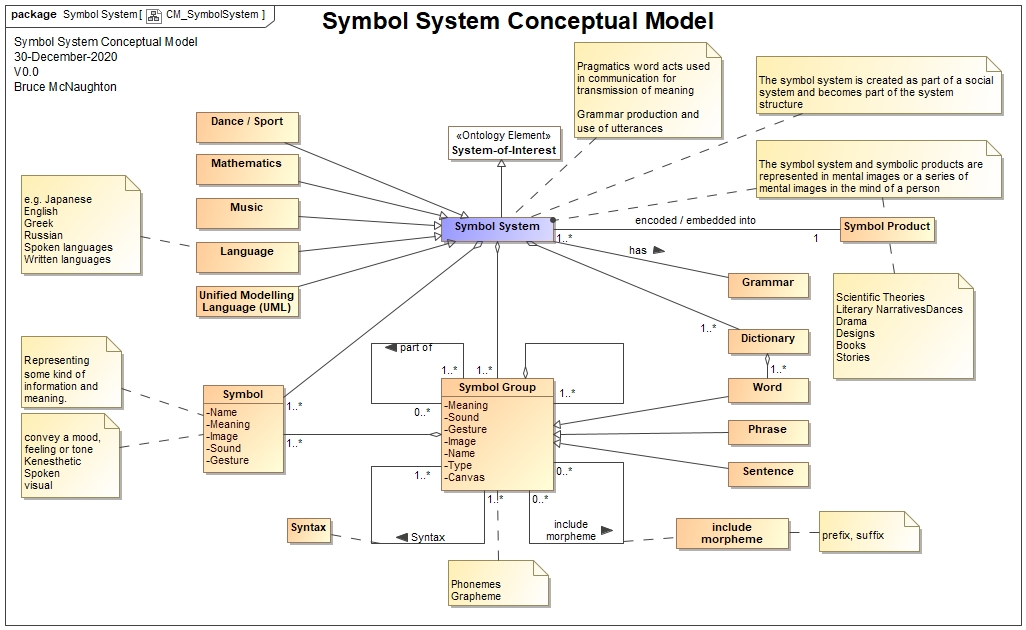Symbol System
Name: Symbol System
Based on: Designed Abstract System
An designed abstract system that may or may not be written. Symbol system can be shared through any modes of communication: Spoken, written or gestures.
Symbol systems form part of the system structure for a social system.
Overall Purpose:
-
Provide a shared vocabulary for people to use in social systems
-
Provide a way to capture cultural changes or variants for a language
-
Enable encoding for Symbol Products
-
Capture the sounds, gestures and symbols for a symbol system.
-
Basis for communication and alignment of thinking
System Quantity Properties
- Number of symbols, and symbol sets in the lexicon
Systemic Quality Properties
- Accuracy of communication
Systemic Capabilities or Functions
The symbol system establishes:
-
Grammar for a language
-
Meaning for communications
-
Ability to encode and decode

System States
The various defined states that the System of System Thinkers main group and any sub-groups can be in.
- Architected / Designed
- Shared usage
Symbol System Practitioners
-
User of the symbol system
-
Designer of the Symbol System
-
Trainer of the Symbol System
-
Authors of symbol system documentation (if any)
Symbolic Products
-
Books
-
Music
-
Dance
-
Expression of models using UML
-
Sports
System Symbol integration
-
into a person's mental processes for use in mental images.
-
into a social system culture
System Element: Identification and Relationships
The symbol system consists of the following system elements and relationships:

Configuration / Scenario:
Describes any configuration / scenario attributes for a specific system-of-interest. This may not be appropriate for all system descriptions (e.g. patterns or abstract systems).
Cyclical (Repeating / Regular) Processes
Regular cycles
Trigger: need to transfer knowledge Process: encode using the symbol system and send information
Trigger; understand communication Process: read and decode using the symbol system
Trigger: need to respond to communication Process formulate feedback using symbol system and communicate.
Development Life Cycle Processes
Trigger: new usage Process: upgrade the symbol system or create a new symbol system
Trigger: gap in symbol system use Process: add new symbols or remove symbols
Trigger: need to integrate Process: synthesis with other symbol systems and authors.
Notes
Space for notes
The following references support this type of system-of-interest.